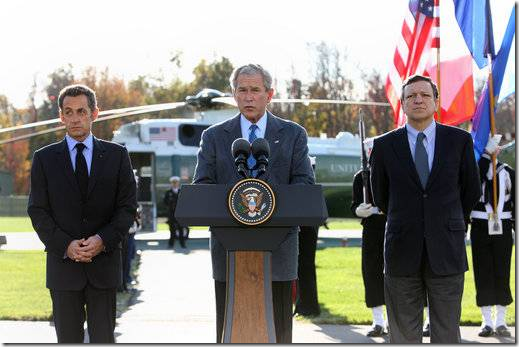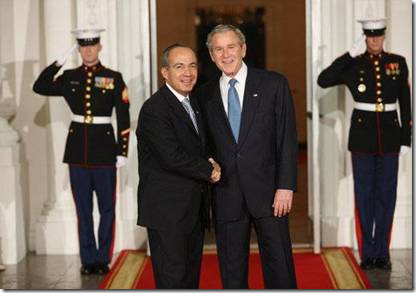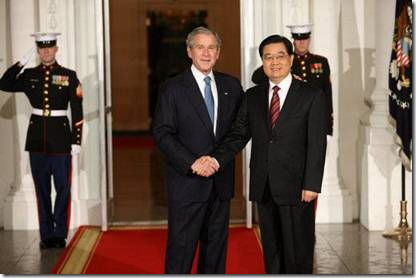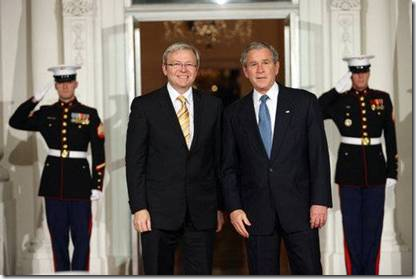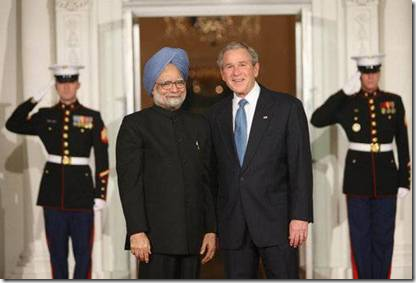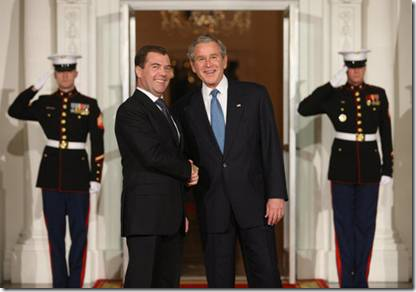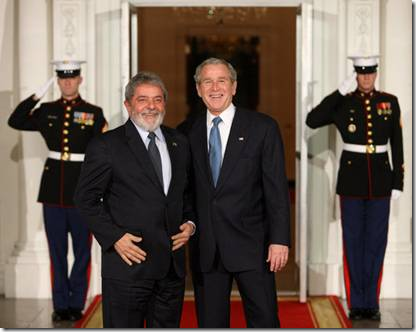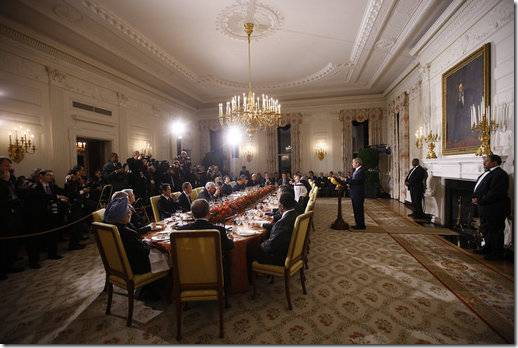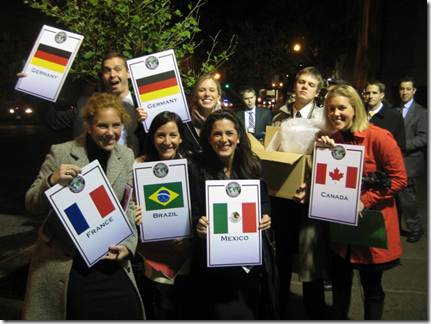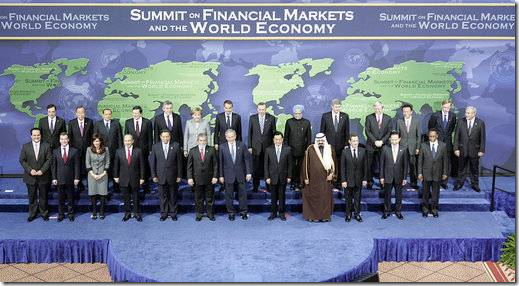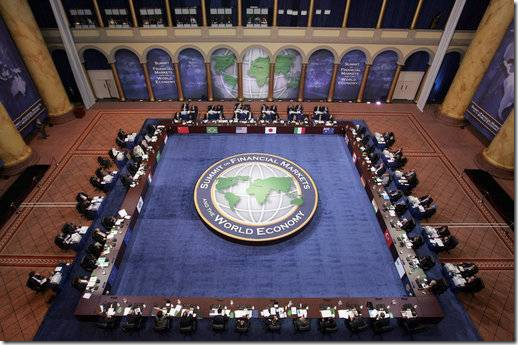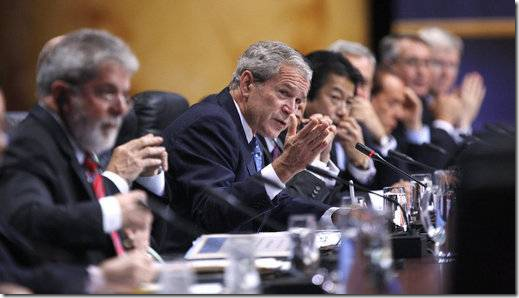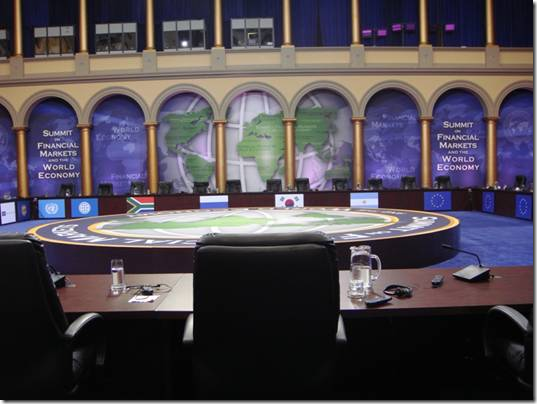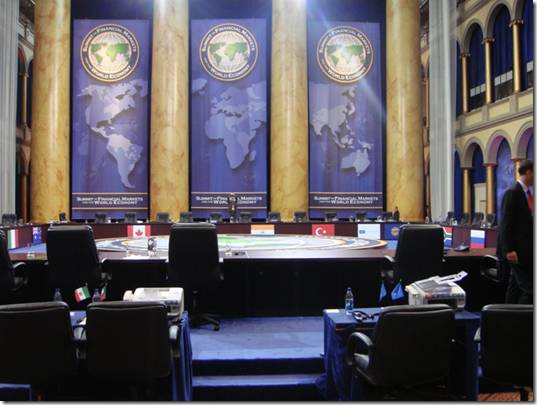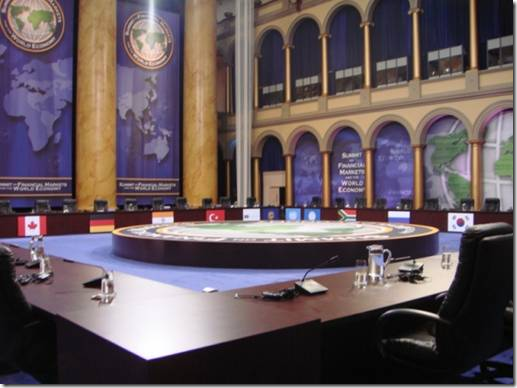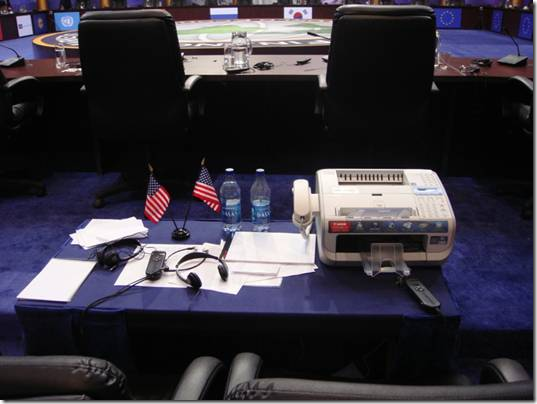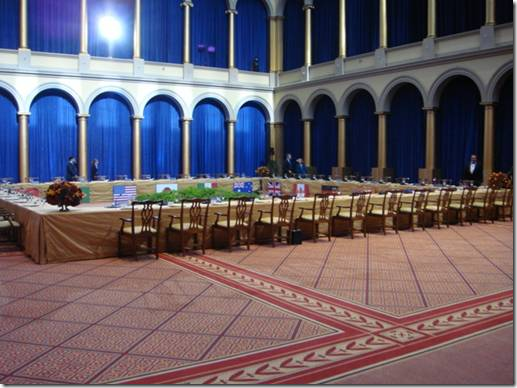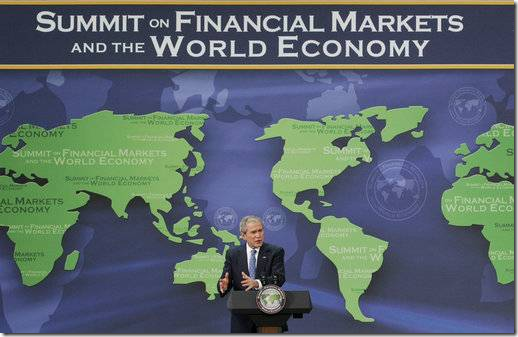The President hosted the Summit on Financial Markets and the World Economy this past Friday and Saturday at the National Building Museum here in Washington, DC.
This is the first of a two-part note. Part one will describe the mechanics of the Summit and show some photos. Part two will describe the substance.
The action began in mid-October after the President met at Camp David with French President Nicolas Sarkozy and Manuel Barrosso, President of the European Commission:
A statement released after that meeting included the following:
[The three leaders] agreed they would reach out to other world leaders next week with the idea of beginning a series of summits on addressing the challenges facing the global economy.World leaders will be consulted about the idea of a first summit of heads of government to be held in the U.S. soon after the U.S. elections, in order to review progress being made to address the current crisis and to seek agreement on principles of reform needed to avoid a repetition and assure global prosperity in the future. Later summits would be designed to implement agreement on specific steps to be taken to meet those principles.
Four days later, we released a Statement by Press Secretary Dana Perino, which included the following:
Today, the President is inviting the leaders of the Group of 20 countries to a summit in the Washington, D.C. area, on November 15 to discuss financial markets and the global economy.
The G-20 members are: Argentina, Australia, Brazil, Canada, China, France, Germany, India, Indonesia, Italy, Japan, South Korea, Mexico, Russia, Saudi Arabia, South Africa, Turkey, the United Kingdom, the United States, and the European Union.
The Managing Director of the International Monetary Fund, the President of the World Bank, the United Nations Secretary-General, and the Chairman of the Financial Stability Forum have also been invited to participate.
Normally a summit like this takes at least a year to plan. The work of an incredible team from the Administration built an incredible summit in only 24 days.
As you can see, the G-20 actually includes 19 States, plus the European Union. The meeting also included the heads of the major international financial institutions (IFIs, pronounced “IF-ees”): the International Monetary Fund (IMF), the World Bank, the U.N. Secretary General, and the Financial Stability Forum. In addition, the final summit meeting included the heads of Spain and the Netherlands.
Events began last Friday evening with the President spending almost an hour greeting leaders at the North Portico of the White House.
(Game: Name that Leader. Answers are at the bottom.)
After a reception in the East Room, the President hosted a dinner in the State Dining Room with the leaders. Here he is offering a toast:
We are here because we share a concern about the impact of the global financial crisis on the people of our nations. We share a determination to fix the problems that led to this turmoil. We share a conviction that by working together, we can restore the global economy to the path of long-term prosperity.
Each nation had four representatives in the Saturday summit discussions:
- The leader (for the U.S., President Bush);
- the finance minister (for the U.S., Secretary Paulson);
- the “Sherpa” (for the U.S., Dan Price); and
- the deputy finance minister (for the U.S., Dave McCormick).
The “Sherpa” is an interesting position. It’s derived from the annual G-8 meeting. Each leader appoints a personal representative to carry his or her heavy load in the negotiations leading up to the leaders’ meeting. For the U.S., the Sherpa is always the senior international economic policy advisor in the White House. Dan and Dave led all the negotiations leading up to the G-20 summit (since the U.S. was a host), and they are key players in the success of that summit. In the G-8 context, the Sherpa’s deputy is known as the “sous-sherpa,” and the #3 person is the “yak.”
The Saturday summit meeting was held at the beautiful National Building Museum in Washington, DC. Our advance team did all this setup beginning late Thursday night. Some White House staff showed up at 5 AM Saturday to help escort the delegates:
The meeting began with the traditional family photo.”
The leaders then went to the summit session. The inner square is the leaders with their finance ministers. Behind each is a small table with the Sherpa and Finance deputy.
Here’s the President’s view:
Here are two different angles on the room:
And here’s a view from the U.S. Sherpa/finance deputy table:
After the “plenary session,” the Leaders broke for lunch:
The Leaders left after lunch (one report said there were over 400 vehicles in the motorcades combined), while the President made a statement to the press:
Part two of this note looks at what was actually accomplished at the summit.
Answers to Name that Leader:
- Mexican President Felipe Calderon
- Chinese President Hu Jintao
- Australian Prime Minister Kevin Rudd
- Indian Prime Minister Manmohan Singh
- Russian President Dmitryi Medvedev
- Brazilian President Luiz Inacio Lula da Silva of Brazil (aka “Lula”)
